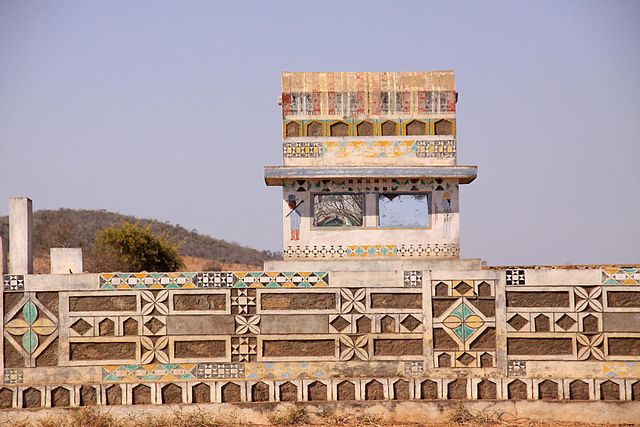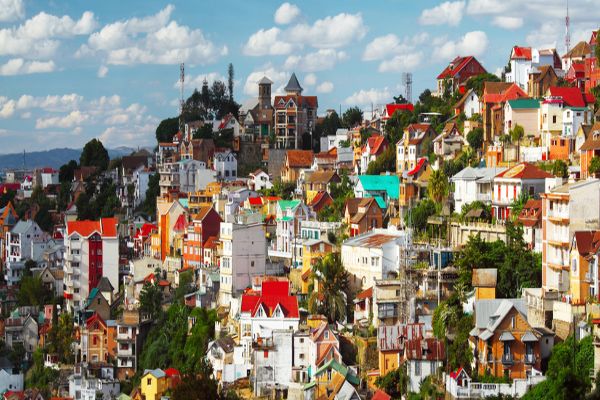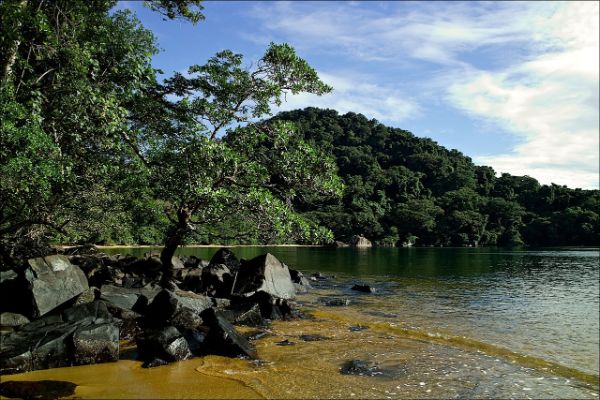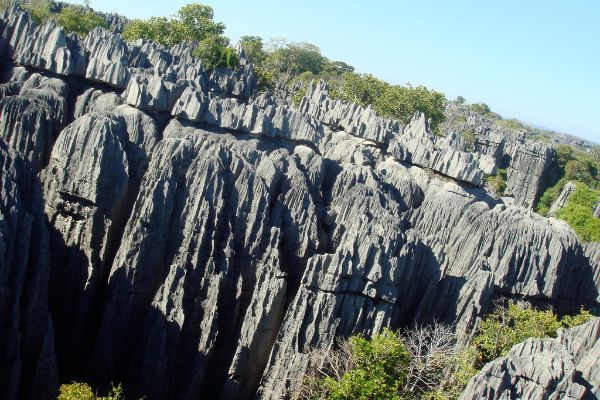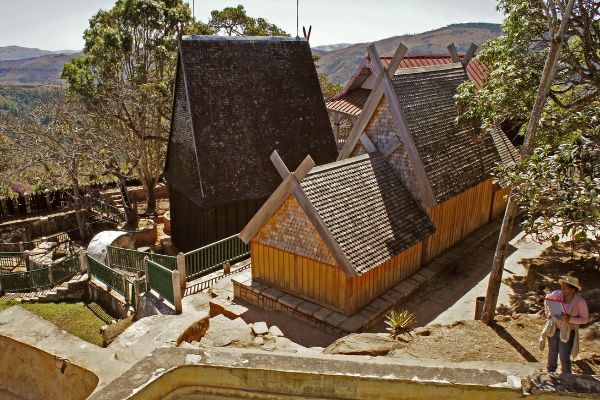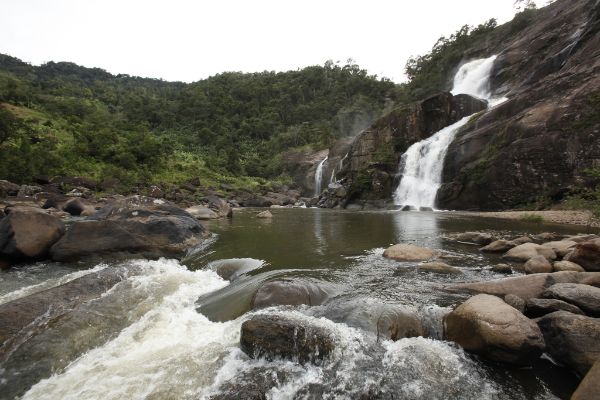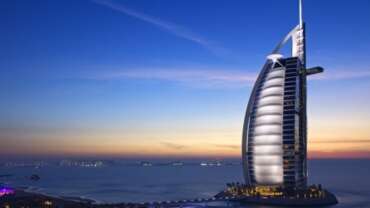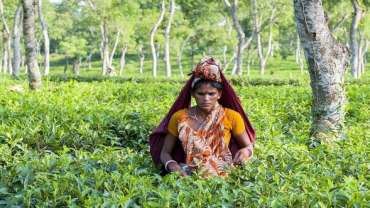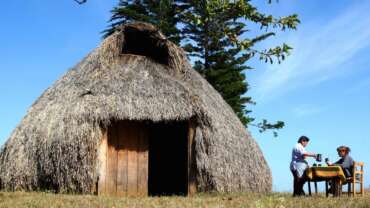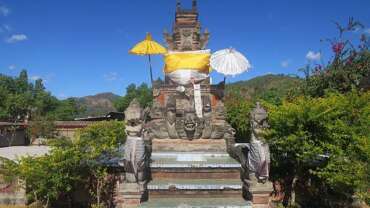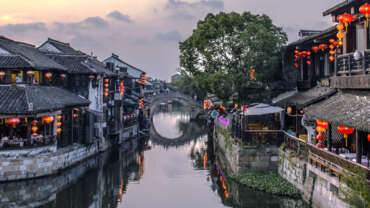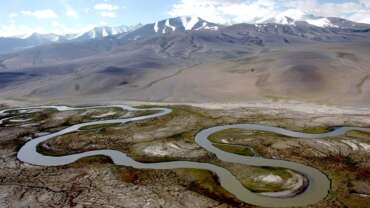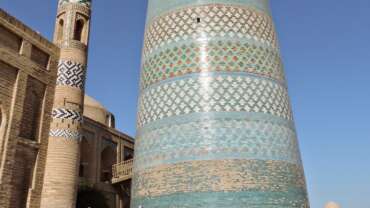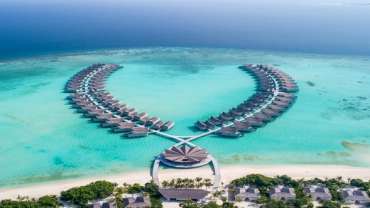Madagascar - A genuine island, a world apart!
Madagascar, officially the Republic of Madagascar, and previously known as the Malagasy Republic, is an island country in the Indian Ocean, approximately 400 kilometres off the coast of East Africa. At 592,800 square kilometres Madagascar is the world’s second-largest island country.
History of Madagascar
Early history
Archaeological investigations in the 20th century indicated that human settlers reached Madagascar about 700 CE. Although the huge island lies geographically close to Bantu-speaking Africa, its language, Malagasy, belongs to the distant Western Malayo-Polynesian branch of the Austronesian language family. There are nonetheless a number of Bantu words in the language, as well as some phonetic and grammatical modifiers of Bantu origin. Bantu elements exist in every dialect of Malagasy and appear to have been established for some time.
As a people, the Malagasy represent a unique blend of Asian and African cultural features found nowhere else in the world. Although Asian features predominate on the whole, African ancestry is present and African influences in Malagasy material and nonmaterial culture are evident; the history and precise nature of this relationship, however, remains a matter of debate.
Madagascar from 1500 to c. 1650
Much of Madagascar was populated by internal migration before the beginning of the 16th century, giving the theretofore empty lands their tompontany (original inhabitants, or “masters of the soil”). Yet politically the island remained fragmented. Most of the nearly 20 ethnic groups that make up the modern Malagasy population did not attain any form of “national” consciousness until new political ideas arrived from abroad in the 1500s and began to spread throughout the island. A host of written European accounts from the 16th and early 17th centuries fail to reveal any large state or empire, and few of the Malagasy oral traditions collected since the mid-19th century go back that far in time.
Still, small local states were found at many points along the coast visited by European ships. The capitals were almost always located near river mouths, territorial domains were invariably small, and rulers were independent of one another. Alliances and wars were usually short-lived affairs involving limited economic objectives and little loss of life, and they seldom led to any border adjustments. Economies were pastoral or agricultural, often a mixture of both, and there were no radical differences in wealth. In some areas the rulers appeared to be absolute, while in others elders and priests had the preponderant influence. In one area in southeastern Madagascar, later to become known as Fort-Dauphin (site of the French East India Company fort of that name; present-day Tôlan̈aro), early Europeans believed they had found a Muslim state in existence among the Antanosy people of the region. It was ruled by a “Moorish king” and had an aristocracy with privileges deriving presumably from Islam. Their collective name was Zafindraminia, or “descendants of Raminia,” the ultimate great ancestor.
In the first quarter of the 16th century, Portuguese navigators reported a number of coastal towns in northern Madagascar that were architecturally similar to Kilwa, a once important entrepôt in what is today Tanzania. The towns belonged to an Afro-Arab commercial network in the western Indian Ocean that undoubtedly predated the 16th century. At the town of Vohemar, once the island’s northeastern centre of international trade, the blend of Malagasy and Afro-Arab customs produced an arts-and-crafts tradition that was quite original.
Portuguese explorers who visited the Matitana River valley in southeastern Madagascar witnessed the arrival of a group of Afro-Arabs (“Moors from Malindi”) between 1507 and 1513. Within one or two generations the descendants of this group had intermarried and merged with the local tompontany to form another group known as the Antemoro. By the 1630s the Antemoro had formed a theocratic state, which was the only state in Madagascar at the time to possess written texts. Using the Arabic alphabet, the texts were written in the Malagasy language and were both religious and secular in nature. Proximity to Islam became a major criterion among the Antemoro for the right to rule, and there is little doubt that the four Antemoro sacerdotal clans were far closer to the Muslim faith than were the Zafindraminia of the Fort-Dauphin area. In time, Antemoro holy men, traveling far and wide within Madagascar, came to influence other Malagasy in both religion and government.
Political evolution from 1650 to 1810
Unknown to the early coastal visitors from Europe, new and historically pivotal dynasties were beginning to form in southwestern and central Madagascar toward the mid-16th century. Two of them, the Maroserana in the southwest and the Andriana-Merina in central Madagascar, would go on to create vast empires, each with its own apex and decline, between about 1650 and 1896, the year the French annexed Madagascar. While the Maroserana were able to establish their rulers over several south-central peoples, the most outstanding achievement of the dynasty was the creation of two states in western Madagascar, Menabé and Boina. These states later combined into the Sakalava empire, which controlled most of western Madagascar and several adjacent areas deep inland.
The Sakalava were originally a group of warriors who came into contact with the Maroserana before 1660, the year the Maroserana ruler, King Andriandahifotsy, founded Menabé. Ultimately, “Sakalava citizenship” was extended to hundreds of west-coast clans as the original Sakalava warriors and their descendants intermarried and merged with them. A sense of unity also came from religion, as the Maroserana royals upon death became the sacred ancestors of all Sakalava. The Sakalava empire was ultimately weakened by internal power struggles for the throne, by attempts to substitute Islam for the ancestral cult, and, after 1810, by wars with the Merina, a people of the central plateau already on the way to an empire.
The Betsimisaraka confederation, a quasi-state concurrent with the late Sakalava empire, was a brief but successful attempt in the 18th century to unite the coastal peoples of Madagascar’s eastern littoral. Ruled by Ratsimilaho, son of an English pirate and a Malagasy princess, the viable confederation extended along more than 200 miles of coastline. After Ratsimilaho’s death in 1750, the confederation began an abrupt, though prolonged, disintegration.
The Merina kingdom (Imerina) was founded toward the end of the 16th century in the swampy Ikopa valley on the central plateau. Antananarivo (Tananarive) became its capital. In the 18th century Imerina was divided among four warring kings. One of them, Andrianampoinimerina, who reigned 1787–1810, reunited the kingdom about 1797. He gave it uniform laws and administration and sold slaves to the French on the coast, using the guns he got in return to conquer his neighbours, the Betsileo. Under Andrianampoinimerina, Merina society was divided into a ruling noble class (Andriana), a class of commoners (Hova), and a slave class (Andevo). At Andrianampoinimerina’s death, he left his son a single political ambition: “The sea will be the boundary of my rice field” (i.e., of his kingdom).
People of Madagascar
Madagascar has been inhabited by human beings for the relatively short period of about 1,300 years. Language and culture point unequivocally to Indonesian origins, but there is no empirical evidence of how, why, or by what route the first settlers came to the island. Although studies of the winds and currents of the Indian Ocean indicate that the voyage from Indonesia could have been made, there is considerable controversy about the nature of the journey. Some scholars argue that the first settlers came directly from Indonesia, possibly in a single voyage, and that the African elements found in the population and its culture were added later, as the result of migration and the slave trade. Others suggest that the peopling of the island was the result of several voyages that proceeded along the coast of India, the Arabian Peninsula, and Africa and that the population that settled the island was already mixed.
There is also widespread evidence—from linguistics, archaeology, and tradition—of influence from Afro-Arab settlers on the coasts before 1000 CE. There is slighter evidence of an Indian influence in vocabulary, but there is no trace of Hinduism in Malagasy culture. Evidence of Sunni Islam appears only in later coastal settlements.
Ethnic groups
More than nine-tenths of the population is Malagasy, which is divided into about 20 ethnic groups. The largest and most dominant of the groups is the Merina people, who are scattered throughout the island. The name Merina (Imerina) is said to mean Elevated People, deriving from the fact that they lived on the plateau. The second largest group is the Betsimisaraka (The Inseparable Multitude), who live generally in the east. The third most numerous group is the Betsileo (The Invincible Multitude), who inhabit the plateau around Fianarantsoa. Other important peoples are the Tsimihety (Those Who Do Not Cut Their Hair), the Sakalava (People of the Long Valley), the Antandroy (People of the Thorn Bush), the Tanala (People of the Forest), the Antaimoro (People of the Banks), and the Bara (a name of uncertain origin). Smaller groups are the Antanosy (People of the Island), the Antaifasy (People of the Sand), the Sihanaka (People of the Lake), the Antakarana (People of the Rocks), the Betanimena (People of the Red Soil), who are now largely absorbed by the Merina, the Bezanozano (Those with Many-Braided Hair), and the Mahafaly (Those Who Make Taboos). These ethnic names do not stand for clear-cut cultural boundaries, for in many cases one group shades imperceptibly into another. Moreover, the conventional translations are by no means reliable, and most of the names themselves are of somewhat recent origin, probably crystallized and rigidified by the exigencies of colonial administration more than by the realities of indigenous culture. In many cases these people represent endogamous and often non-unilinear descent groups.
Languages
Most inhabitants of Madagascar speak Malagasy, the national language, which is written in the Latin alphabet. Although Madagascar is located geographically close to Bantu-speaking Africa, Malagasy is a standardized version of Merina, an Austronesian language. Nevertheless, there are a number of Bantu words in the language, as well as some phonetic and grammatical modifiers of Bantu origin. There exist numerous local variations of Malagasy, all of which are mutually intelligible, and Bantu elements, which exist in every dialect, appear to have been established for some time. French is also widely spoken and is officially recognized. It is used as a medium of instruction, especially in the upper grade levels, as is Malagasy. English is also spoken and its use has increased. Comorian is spoken among a sizable community of immigrants from Comoros.
Religion
Some two-fifths of the population practices traditional religion, which is based upon ancestor worship. The dead are buried in tombs and are believed to reward or punish the living. There is a supreme being called Zanahary (the Creator) or Andriamanitra (the Fragrant One). There is also a belief in local spirits, and a complex system of taboos constrains traditional Malagasy life.
Almost half of the population is Christian, with more than one-fourth of the population adherent to Protestantism and about one-fifth to Roman Catholicism. Conversion to Christianity has not eliminated the observation of traditional religious rites, however, particularly those involving the dead. A community of Sunni Muslims is found in the northwest.
Art & Culture of Madagascar
The arts
The conquest of the plateau peoples by the French and their subsequent assimilation of Western values have deprived them of most of their traditional institutions. In music, however, Western dance and musical instruments have been adapted to Malagasy rhythms. The tube zither, the conch, and the cone drum are of Indonesian origin, while other types of drums and animal horns suggest African influence. Folk music has been retained, but much of the singing consists of Western church hymns and chants adapted to the distinctive Malagasy musical style. Several musicians and ensembles of Malagasy origin, including Tarika, have enjoyed a rise to international popularity.
The Mahafaly have a remarkable wood-carving industry, and their tombs of coloured stones and carved wooden posts are among the most beautiful on the island. The woodworking skills of the Zafimaniry, exemplified by their elaborate carved designs, are also renowned; their knowledge of woodcraft is included by UNESCO among its designations of Intangible Cultural Heritage, intended to safeguard nonmaterial cultural properties. The Betsileo also have a thriving wood-carving industry, making inlaid furniture of valuable hardwoods. In addition they produce ornamental cloths of very finely woven raffia and have become specialists in the production of coloured straw hats. Betsileo and Merina women in particular are expert in French-style embroidery, sewing, and dressmaking.
The Malagasy language is rich in proverbs, and there is now an extensive written literature including poetry, legend, history, works treating contemporary themes, and scholarly works. Literary production is aided by an excellent printing industry, for which the Merina have shown a flair since learning it from the London Missionary Society in the 1820s. The peoples of the southeast still preserve their sorabe manuscripts—discourses written in Arabic script on geomancy, astrology, history, and traditional lore—with great reverence; few can be more than 200 years old, although some may be copies of much earlier manuscripts.
Cultural Life
Cultural milieu
Malagasy culture is largely composed of Indonesian elements, with other influences evident. Arabic and Islamic contributions include sikidy, an intricate system of divination, and calendrical features, such as the Arabic-derived names of the days of the week, which also apply to the markets held on those days. The coastal areas of the west, north, and south might be expected to show African cultural elements, but, apart from some Bantu words, these are often difficult to identify conclusively.
Daily life and social customs
The countryside, home to the majority of Malagasy, remains highly traditional, both in its lifestyle and in its political framework, with most decisions still being made by a council of male elders. Young people who resent this domination and see little economic future in their home villages are one of the main sources of the rural-to-urban migration that has fed the growth of Madagascar’s cities.
For rural residents, traditional ceremonies and traveling orators and musicians are a significant source of entertainment. In urban areas, forms of entertainment vary. Some Malagasy join video clubs, which rent and project videos. Action films are very popular, particularly since films are rarely dubbed or subtitled in Malagasy; poorer inhabitants of the cities, however, have reduced access to this type of entertainment.
Typical attire in Madagascar varies according to location and socioeconomic status. Malagasy who live in the countryside or in the poorer or older parts of the cities are more likely to wear traditional attire; for men, this consists of a large shirt and shorts or long pants, while women, particularly those living in the plateau, may wear dresses with gathered skirts. In the coastal regions, women often wear a wrapped skirt with a top; a rectangular shawl, called a lamba, is also worn, especially on ceremonial occasions. The middle classes frequently wear Western dress, and blue jeans are ubiquitous among the youth of the cities. There too, however, women will often wear an abbreviated form of the lamba, even with Western dress.
Most Malagasy, regardless of their degree of “modernity,” continue to observe traditional customs, particularly those connected with the family tomb and ceremonies showing respect for the family’s ancestors. The most common of these, aside from burial, is the famadihana, in which the bones of the ancestors are removed from the family tomb, wrapped in new lamba especially woven for that purpose, and placed again in the tomb after the delivery of a kabary, a traditional “special occasion” speech. The kabary is also utilized at other occasions ranging from weddings to the opening of businesses. Speakers who are able to deliver a good speech, filled with appropriate traditional proverbs, are well paid.
The government encourages the blending of old and new cultural expressions, and a number of seasonal festivals have been promoted, including the Festival of Rice and the Festival of the Trees. Towns, churches, schools, and private groups hold concerts or dances, and in the cities there are cultural associations based on the members’ home districts. Holidays celebrated in Madagascar include those observed by the wider Christian community, such as Easter and Christmas, as well as Independence Day, celebrated on June 26, and the Anniversary of the Republic, observed on December 30.
NATURE AND OBSERVATION
Madagascar offers a lot of opportunities. Offering an incomparable wealth and various landscapes, climates and species, you will have the choice among many activities. Madagascar is the promise of an extraordinary journey !
Fauna and flora
Fauna and flora of Madagascar are incredibly rich. Scientists consider the island as a nature’s sanctuary and as the craddle of endemic species. You will discover there unique species in the world, with its close to 7 baobabs varieties, 19 000 plant species, and a fauna rich of more than 100 000 species. This exceptional uniqueness is especially due to its isolated place in the middle of the Indian Ocean. A colorful trip awaits you !



